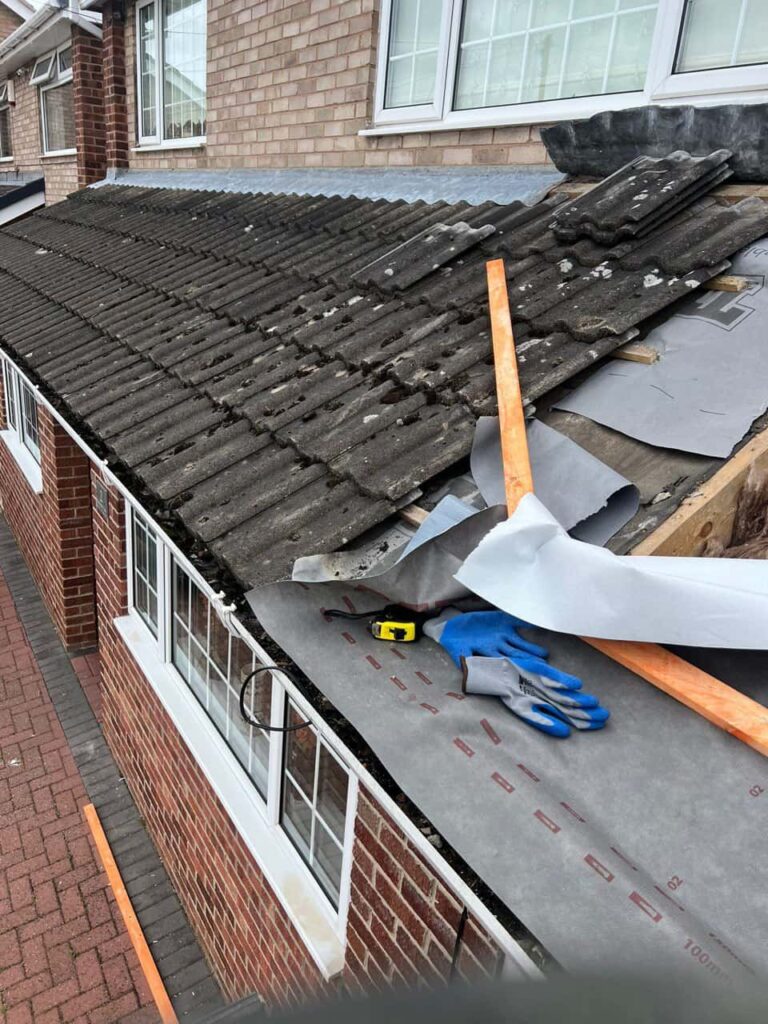A pitched roof is designed to provide long-term durability and protection for your property. However, despite its robust construction, certain factors can cause a roof to deteriorate faster than expected. If left unaddressed, these issues can lead to structural damage, leaks, and costly repairs. Understanding the warning signs can help homeowners take timely action to avoid more extensive problems.
The Lifespan of a Pitched Roof
Most pitched roofs are built to last between 20 to 50 years, depending on the materials used and maintenance levels. However, various factors can accelerate wear and tear, reducing the expected lifespan and requiring a full roof replacement sooner than anticipated.
Factors That Can Lead to Early Roof Replacement
1. Poor Quality Installation
A roof that has not been installed correctly is more likely to fail prematurely. Common installation errors include:
- Incorrectly fitted tiles or slates, leading to gaps and water ingress
- Inadequate underlay, which fails to provide a secondary waterproof barrier
- Poorly secured flashing, resulting in leaks around chimneys and valleys
Even if a roof appears fine initially, these issues can cause significant deterioration over time.
2. Weather Damage and Harsh Conditions
The UK experiences a wide range of weather conditions, all of which can contribute to the early breakdown of a pitched roof.
- Heavy rain and storms can dislodge tiles and weaken structural components.
- Snow and frost can cause materials to expand and contract, leading to cracks.
- High winds can lift tiles or slates, exposing the underlay and roof timbers to moisture.
Regular roof inspections can help identify and address damage before it leads to major problems.
3. Lack of Routine Maintenance
Neglecting routine maintenance can significantly reduce the lifespan of a pitched roof. Key maintenance issues include:
- Blocked gutters, which lead to water pooling and damage to roof edges
- Moss and algae growth, which trap moisture and weaken roofing materials
- Missing or broken tiles, allowing water to seep into the roof structure
Carrying out periodic inspections and clearing debris can prevent small problems from escalating into costly repairs.
4. Roof Timber Decay
The supporting structure of a pitched roof relies on strong timbers. If these become compromised due to moisture ingress or wood rot, the roof may lose its structural integrity. Signs of timber decay include:
- A sagging roofline, indicating weakened beams
- Visible signs of rot or insect infestation
- Increased draughts and dampness inside the property
In cases of severe timber damage, a complete roof replacement may be the only viable solution.
5. Poor Ventilation and Condensation Issues
A well-ventilated roof allows airflow to prevent moisture buildup. However, if ventilation is inadequate, condensation can form on the underside of roof tiles, leading to:
- Mould and mildew growth on roof timbers
- Damp insulation, reducing energy efficiency
- Structural weakening over time
If left unresolved, condensation can accelerate the degradation of a pitched roof, making replacement necessary.
6. Age-Related Deterioration
Even with the best maintenance, all roofs will eventually reach the end of their lifespan. Over time, materials naturally degrade, becoming less effective at keeping out water and withstanding the elements. Signs that indicate an ageing roof may need replacing include:
- Frequent leaks despite repeated repairs
- Curled or cracked tiles and slates
- Excessive granule loss on asphalt tiles
If these issues persist, replacing the entire roof may be a more cost-effective solution than ongoing repairs.
When to Consider a Full Roof Replacement
While some roofing issues can be fixed with targeted repairs, a full roof replacement is often the best solution when:
- Multiple sections of the roof are damaged or deteriorating
- Frequent leaks are causing ongoing interior damage
- The roof structure itself is compromised
- The cost of repeated repairs is becoming unsustainable
Conclusion
A pitched roof is a long-term investment, but various factors can lead to premature deterioration, making early replacement necessary. Poor installation, weather damage, timber decay, and inadequate maintenance can all contribute to a roof failing sooner than expected.
Regular inspections and timely repairs can help extend the lifespan of your roof. However, if your roof is showing persistent signs of damage, it may be time to consider a replacement. For expert advice and professional roofing services in Brownsover, Warwickshire, get in touch with our team to discuss your options.
Call us on: 01788 221797
Click here to find out more about Brownsover Roofing Repairs
Click here to complete our contact form and see how we can help with your roofing needs.

